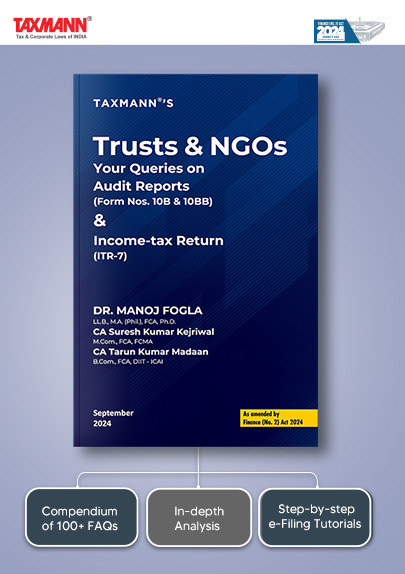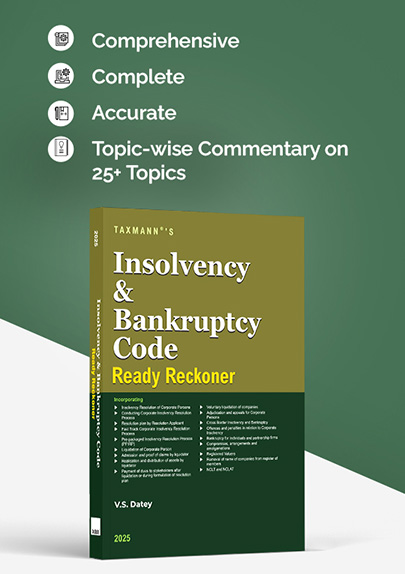[Opinion] Unpacking the Debate Over Section 54F Exemption
- Blog|News|Income Tax|
- 3 Min Read
- By Taxmann
- |
- Last Updated on 31 January, 2025
Shilpa Sharma & Diksha Goel – [2025] 170 taxmann.com 855 (Article)
1. Background
Section 45 of the Income Tax Act, 1961, mandates that any profits or gains arising from the transfer of a capital asset in the previous year is chargeable to income tax under the head “Capital gains”. Such profits and gains arising from the transfer of a capital asset would be eligible for exemption under section 54, 54B, 54D, 54F, 54G, 54GA, 54GB, 54H, etc. subject to fulfilment of certain conditions. Each exemption section provides eligibility criteria, conditions for reinvestment of capital gains under deposit schemes and lock-in-period.
2. Capital Gain Accounts Scheme
In few cases where capital gain/net consideration amount is not reinvested/appropriated for specified purposes, then for the purpose of claiming exemption under capital gain provisions, deposit is required to be made under the Capital Gains Accounts Scheme (CGAS). This scheme was introduced to help taxpayers who are unable to reinvest their capital gains in specified assets before the due date of filing of income-tax returns. By depositing the capital gains in CGAS account, taxpayers can still claim exemptions under various sections of the Act.
This scheme requires the taxpayer to deposit the amount in a specified bank or institution before furnishing the return of income, ensuring that the capital gain remain exempt from tax until the funds are utilized for the intended investment. The deposited amount, along with any amount already utilized for the purchase or construction of the new asset, is deemed to be the cost of the new asset for the purpose of claiming exemption under various sections.
3. Amount to be reinvested: Capital Gain/Net Consideration
The amount required to be deposited in the Capital Gains Account Scheme (CGAS) varies across different sections of the Income-tax Act.
For instance, Section 54B and section 54D, specifies any amount of capital gain not utilized by the taxpayer for the purchase of a new asset before furnishing the return of income under Section 139(1) must be deposited in a specified account before the due date of furnishing such return.
In contrast to the above, Section 54, Section 54GSection 54GA, uses the expression “the amount of the capital gain which is not appropriated by the assessee” for the purpose of deposit to be made under the CGAS account.
Section 54F, on the other hand, uses the expression “if the amount of net consideration which is not appropriated towards the purchase of a new asset made within one year before the date on which the transfer of the original asset took place, or which is not utilised by him for the purchase or construction of the new asset before the date of furnishing the return of income under Section 139……..”, must be deposited in a specified account before furnishing the return of income but not beyond the due date of filing the return under section 139(1) of the Act.
Explanation provided under the proviso to section sub-section (1) of section 54 specifies the term “net consideration” as follows:
“Explanation.—For the purposes of this section,—
“net consideration”, in relation to the transfer of a capital asset, means the full value of the consideration received or accruing as a result of the transfer of the capital asset as reduced by any expenditure incurred wholly and exclusively in connection with such transfer.”
Click Here To Read The Full Article
Disclaimer: The content/information published on the website is only for general information of the user and shall not be construed as legal advice. While the Taxmann has exercised reasonable efforts to ensure the veracity of information/content published, Taxmann shall be under no liability in any manner whatsoever for incorrect information, if any.

Taxmann Publications has a dedicated in-house Research & Editorial Team. This team consists of a team of Chartered Accountants, Company Secretaries, and Lawyers. This team works under the guidance and supervision of editor-in-chief Mr Rakesh Bhargava.
The Research and Editorial Team is responsible for developing reliable and accurate content for the readers. The team follows the six-sigma approach to achieve the benchmark of zero error in its publications and research platforms. The team ensures that the following publication guidelines are thoroughly followed while developing the content:
- The statutory material is obtained only from the authorized and reliable sources
- All the latest developments in the judicial and legislative fields are covered
- Prepare the analytical write-ups on current, controversial, and important issues to help the readers to understand the concept and its implications
- Every content published by Taxmann is complete, accurate and lucid
- All evidence-based statements are supported with proper reference to Section, Circular No., Notification No. or citations
- The golden rules of grammar, style and consistency are thoroughly followed
- Font and size that’s easy to read and remain consistent across all imprint and digital publications are applied






 CA | CS | CMA
CA | CS | CMA


